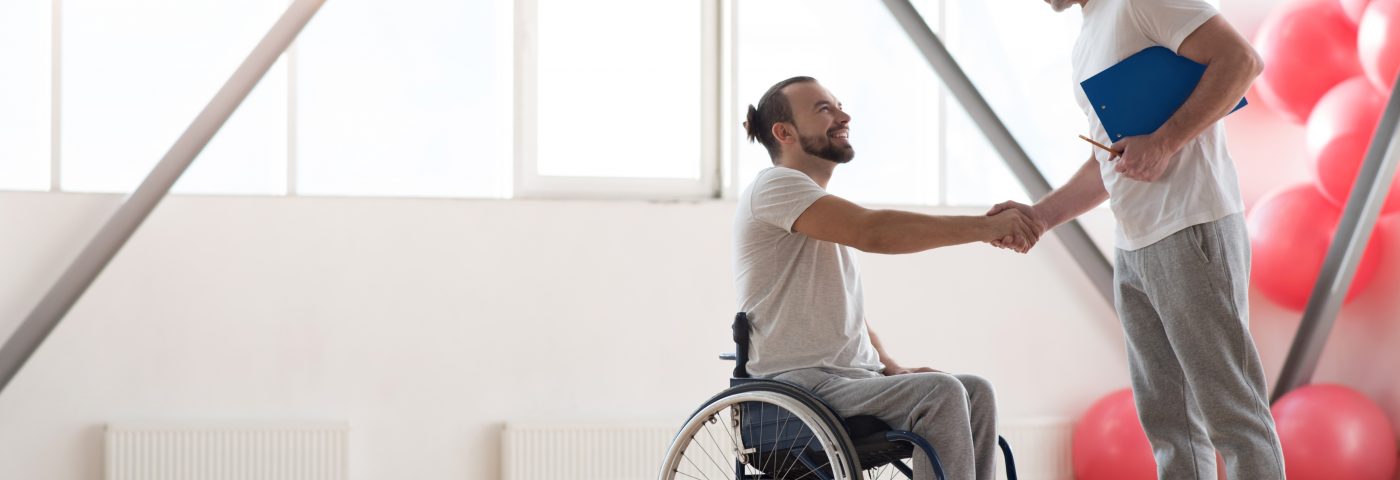Physiotherapy can be helpful to people with adrenoleukodystrophy (ALD), a rare genetic disease characterized by a buildup of toxic fatty molecules within cells. While there is currently no cure for ALD, physiotherapy is an important supportive treatment that can help to reduce pain and allow patients to maintain mobility for as long as possible.
Here are a few tips to help you prepare for a physiotherapy session, whether you are a parent taking a child with ALD or getting treatment for your own symptoms.
How to prepare for the first session?
It’s important for patients to wear comfortable clothing that they can move about in easily. It is also important to be well-rested and hydrated. Don’t schedule a physiotherapy appointment at the end of a long day of errands, for example.
Bring important paperwork along for your first appointment with the physiotherapist. This package should include your referral from your primary care physician, and your insurance information.
If you already have support devices like a cane or orthotic brace, make sure to also bring them with you to the appointment.
What happens during the first session?
During the first physiotherapy session, the therapist will give you or your child a physical exam. They will also test your, or your child’s, flexibility and range of motion, as well as physical strength. For children, this exam might look like games so that that child isn’t anxious or bored. The physiotherapist might ask them to toss or catch a softball or play a dexterity game.
The therapist will walk you or your child through a few supervised exercises. They will also discuss your goals or your child’s goals, both short- and long-term. For example, a short-term goal might be to build strength to make walking easier. For children, the goal might be to be able to play a game. Long-term goals might include learning exercises that you or your child can do regularly to maintain mobility and reduce pain due to muscle cramps. Another might be improving core muscle strength to help with posture.
What happens after the session?
It’s very common to feel tired after physiotherapy. Your muscles might be more achy. However, if you feel severe aches or pains, you should contact your physician and physiotherapist to make sure nothing is wrong.
Likewise, your child may be very tired after the session. You may want to plan time for them to have a nap or short rest before returning to school or their daily routine. You may also want to plan a reward for physiotherapy, so your child has something to look forward to after the appointment.
You will have exercises to do at home, which will help improve flexibility, muscle strength, and range of motion. The specifics will depend on your goals and needs. You may have to supervise these home exercises for a child. The physiotherapist will discuss with you what to watch for, and how to help your child. Depending on the child’s age, exercises may take the form of games. It’s important to keep your child motivated during these exercises, especially if they get frustrated. If you have trouble, talk to your child’s physiotherapist about coping solutions, or another form of the exercise that your child might find more engaging.
For both you and your child, it is important not to overdo it. Don’t add reps to what the physiotherapist assigns or double your “homework.” It’s important to work at a safe pace so that you don’t hurt yourself, or your child.
What happens in future sessions?
In later appointments, the therapist will ask you if you’ve done the exercises and if anything was too difficult or too easy. If you had trouble with any of the exercises, let your therapist know.
Similarly, if you have been supervising your child’s exercises, discuss how things are going with the therapist. You may notice that your child struggles with some exercises. The physiotherapist can use this information to adjust the exercise program.
For some patients, braces or other support devices may be a part of life. Your physiotherapist can help you incorporate these devices into your daily routine, if you have never needed them before. The therapist can also advise you on necessary accommodations, and what you can work toward in physiotherapy.
Last updated: July 1, 2020
***
Adrenoleukodystrophy News is strictly a news and information website about the disease. It does not provide medical advice, diagnosis or treatment. This content is not intended to be a substitute for professional medical advice, diagnosis, or treatment. Always seek the advice of your physician or other qualified health provider with any questions you may have regarding a medical condition. Never disregard professional medical advice or delay in seeking it because of something you have read on this website.


